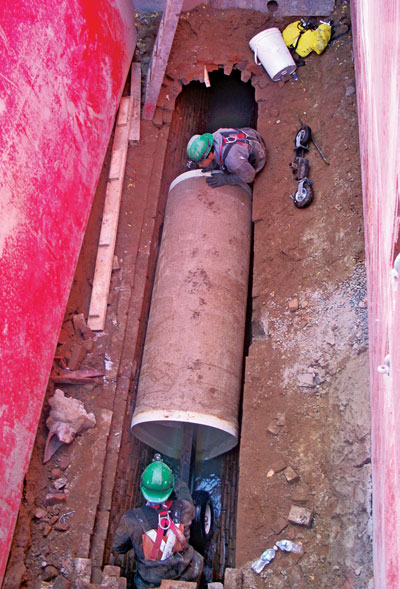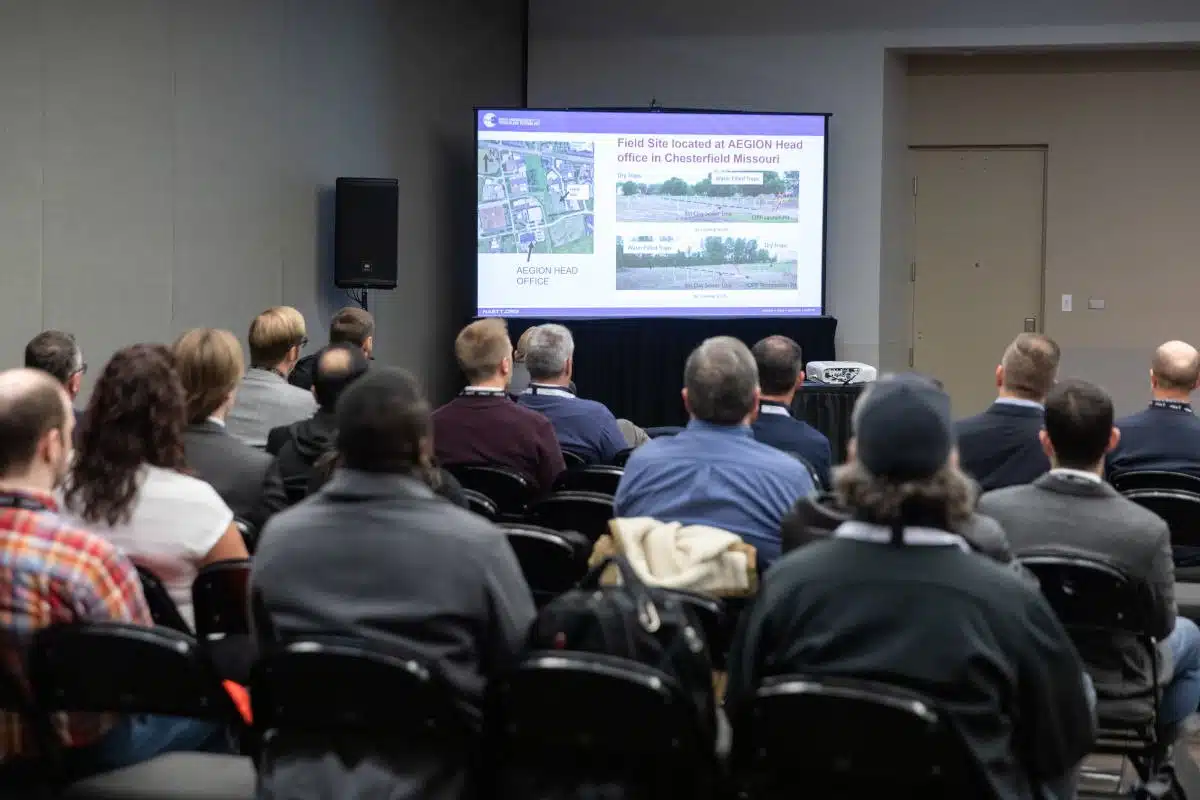
Going Trenchless in the City of Hamilton
Some professionals involved in the management of mainline sewers are very interested to hear how asset management in the City of Hamilton, Ontario, Canada, makes decisions on cured-in-place pipe (CIPP) lining rehabilitation. That is because Hamilton has lined pipes that most utility owners would consider as replacement candidates instead. The City of Hamilton first experimented with CIPP lining starting in 1990 with one-off installations, and since 2001, has continued with a full $10 million per year program.
To date, the City of Hamilton has renewed more than 320 km of mainline sewer using CIPP technology and has realized cost avoidances of approximately $200 million. That is a significant value considering the cost of a small diameter (200 mm to 450 mm) sewer replacement during a local road reconstruction project of approximately 2 km in length can run up to anywhere from $2 million to $2.5 million.
Hamilton staff have gained extensive knowledge on pipe failure modes and causes, as well as CIPP product properties and installation methods. Pipes generally fail because of poor design and installation methods, infiltration and soil loss around the pipe, and because of internal degradation of material caused from effluent conveyed and internal atmospheric conditions (i.e. temperature, acidity, hydrogen sulphide).
RELATED: Leading the Pack — Hamilton, Ontario Is Known for its Asset Management Program
Condition assessment of sewer mains is traditionally achieved by observing and qualifying visible internal pipe defects such as holes, cracks, fractures, ovality, etc. Relating cause of failure to external factors, such as types of soils, water tables, live loading and internal factors such as effluent and atmospheric conditions, allow for a more educated decision on whether to replace or rehabilitate. A newly installed pipe experiences all the live and dead loads it was designed for immediately after installation, a severely failed pipe may be in a state of equilibrium with external factors providing an opportune and favourable time for CIPP rehabilitation.

Site inspection staff are able to recognize potential technical problems in the field, from resin mixing, to impregnation and curing parameters. All this knowledge has come initially from custom internal development of a CIPP Lining Manual including training materials and instructional sessions, to now continuing updates to the CIPP Lining Manual and external education through industry-provided training and workshops.
Inspection staff are also able to recognize and correct deficiencies in workmanship, such as host pipe preparation, proper installation methods, reinstatements of service laterals, cleaning and other back-to-service activities.
Introduction of new rehabilitation materials and methods are not fully adopted without education activities taking place. Manhole rehabilitation using spray-on application is an example of a recent addition to the program. Hamilton is in the final phases of developing a comprehensive inspection guide and training program so that internal staff can efficiently manage both field installation activities and how to apply proper quality control and testing methodologies.
RELATED: Hamilton, Ontario Knows First-Hand the Benefits of Trenchless Rehab
The sewer and water trenchless rehabilitation industry using CIPP lining is continually developing. Support and participation to the industry is a crucial factor for continuous development of the program. Hamilton key personnel are encouraged to participate in trenchless related conferences and workshop events and become members and actively contribute to professional associations and educational institutions. Hamilton staff continue to be involved with professional associations and research initiatives and have actively contributed to developing industry standards, such as the OPSS 409 Closed Circuit Television (CCTV) Inspection of Pipelines and the CSA PLUS 4012-10 Technical Guide Visual Inspection of Sewer Pipe.

Site inspection staff are able to recognize potential technical problems in the field, from resin mixing,
to impregnation and curing parameters. Much of this knowledge has come from custom internal
development of a CIPP Lining Manual, as well as training materials and instructional sessions.
Involvement have guided the industry to the development of new products and installation methods by outlining the needs and benefits of providing services that offering minimal social disruption, critical asset rehabilitation capabilities, and are cost effective. Fully trenchless lateral lining from the mainline and large diameter watermain rehabilitation are both examples of where Hamilton has steered the industry towards. Other similar initiatives include cost effective and non-destructive methods for watermain inspections and large diameter sewer inspections.
Product quality control is integrated to the CIPP lining program. Random samples are regularly taken from the field and tested by an independent laboratory. Sample results are used to determine if the properties of the product meet the design specifications. Hamilton monitors both individual results but also trends over time. Trends are used to determine historical product performance and provide early warning of any downward tendencies. There are many factors that can influence CIPP products during installation. Some of them can be humidity, ambient temperature, resin mixing and impregnation techniques, or simply a new or different installation crew involved.

The City of Hamilton first experimented with CIPP lining starting in 1990 with one-off installations, and since 2001, has continued with a $10 million per year program.
The CIPP lining program has become part of the Capital Project Delivery process. Road reconstruction and rehabilitation capital projects are usually preceded by sewer and sometimes water main lining activities if there are no needs for increased capacity and pipe size upgrades.
This article was contributed by the City of Hamilton, Ontario, Department of Public Works. It previously appeared in the Winter 2018 issue of NASTT’s Trenchless Today, official publication of the North American Society for Trenchless Technology.




